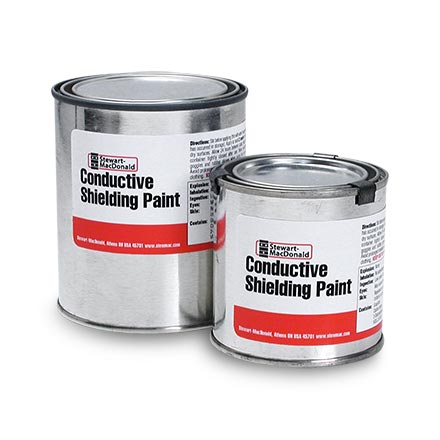
By Ed Malaker
Posted 01/29/2020
If you’re planning on shielding your guitar to cut down on electromagnetic interference, you might be surprised at the number of different products that have sprung up to accomplish that task. The old-fashioned ways are still there, however. You can still shield your guitar with aluminum foil or copper tape, and conductive guitar shielding paint is becoming more and more popular.
Conductive paint is easy to apply and often looks much better than even the most patiently placed strips of copper tape. It is also more durable and is likely to last a lot longer. Additionally, it will resist moisture better than tapes and foils.
We’ve put together a quick buyer’s guide on conductive guitar shielding paint, so that if you’re in the market for it, you can learn a little more about it and narrow down your choices. We’ll talk about Faraday cages, conductive materials, drying time, and toxic fumes, to help make your next purchase easier.
What is Guitar Shielding Paint?
Guitar shielding paint is also known as conductive paint, and there are many brands. Conductive paint is paint or primer mixed with large amounts of a conductive material. Any conductive material can be used to make paint, but the most common materials are graphite, nickel, copper, and aluminum. If advertisements mention carbon paint, they are talking about graphite.
What Type is Best?
Unfortunately, it isn’t as easy as you might think to say which material is the best. If we were fixing a broken circuit or using conductive paint like a wire, it would make sense to use highly conductive materials. If we were using the paint as a substitute for wire, copper would be a better choice than nickel because it’s much more conductive.
However, we are not using conductive paint like a wire; we are using it as a shield to protect our electronics. Instead of a continuous circuit, we are building a type of Faraday cage. It’s important to remember that there is no evidence at this time that suggests a better conducting metal makes a better Faraday cage.
Simply explained, a Faraday cage is a metal box connected to earth ground. Interference from outside the box cannot penetrate the inside. This scientific property is how they can block cell phone service in certain buildings, and it’s going to protect our electronics from electromagnetic interference.
Price
Price is going to be an essential part of your choice. Many conductive paints are costly, but you can take comfort in knowing that it won’t take very much to complete the task. You don’t want to buy more than you are likely to use and many brands have small amounts available for purchase.
Latex Versus Oil-Based
Another critical component to your decision is going to be whether to use oil-based paint or latex. Oil-based conductive paint is going to have many similarities to standard oil-based paint. The biggest concern about oil-based paints is the harmful smells they give off. These smells can linger behind for weeks after your project is complete. One final point about oil-based paint is that you are going to need mineral spirits or acetone to clean your brushes and skin after using the guitar shielding paint.
Latex-based conductive paint can be a little harder to find than oil-based paint, and it will likely be more expensive. These paints have less odor and put out fewer harmful VOCs that can affect your health over time. Latex paints may have a harder time sticking to your wood surfaces, however, so keep that in mind.
Drying Time
It’s important to know how long the paint takes to dry because you cannot put electronics back in place until it does. Many paints claim to take only a few hours to dry, but they often take much longer than that. The smell of many paints, especially if they are oil-based, can linger behind for days and possibly weeks. It’s best to let them air out away from family and pets to prevent any harmful effects from occurring.
Durability
Naturally, you’re going to want a product that lasts for a long time and one that won’t chip off after a few months. Many conductive paints now contain pure acrylic. The advantage to this kind of guitar shielding paint is that it dries very hard and it’s durable enough to last for several years. So, if this is important to you, be sure to check out the different products that contain acrylic.
Color
Unfortunately, there isn’t a lot of variety in color in the world of guitar shielding paint. You get a handful of colors, including black, grey, white, and silver. The majority of our paint is under-cover, though, and is only seen by us, so there’s not much call for assorted colors.
Conclusion
We hope that you’ve found this guide on conductive paint useful. We recommend buying a pint or two of your favorite brands and applying a few coats. Make sure you attach a ground wire to the paint, and you should immediately notice a dramatic change in the amount of hiss and buzz reaching your amplifier. We have several articles that are devoted to step-by-step instructions for shielding your guitar, so if you need any of those, please take a look. You’ll also find a number of great articles on guitar electronics as well as other very useful information for guitarists.
If you’ve found this article helpful, please feel free to share on Facebook and Twitter. For more articles on guitar electronics, visit humbuckersoup.com.
